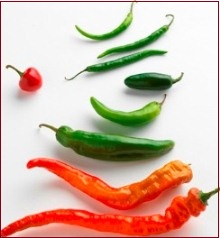Best Ornamental Grasses for Containers | Growing Ornamental Grass
Growing ornamental grasses is fun, you can decorate your house, garden, balcony or patio with them.
Grasses are not only for lawn or for ground cover. They can add a visual charm at any place if you grow them in containers.
Growing and care for ornamental grasses is relatively easy. You can start to grow them from seeds.
Growing ornamental grasses in containers is a great way to feature grasses without letting them branch out and taking over your whole garden. Container grown grasses are also easier to control and they looks stunning when grown with flowers.
Growing Ornamental Grasses in Pots
Ornamental grasses are excellent way to create privacy in the garden, especially in a patio, balcony or terrace. They are extremely resistant to drought and grows rapidly. Although they can tolerate moisture, but the soil should not be waterlogged.
Growing Position
Decide where you want to grow the ornamental grass. Ornamental grasses generally thrive in a spot that gets at least five to six hours of sunlight daily.
Choosing Right Pot
Choosing right pot is also important for growing ornamental grasses in pots. Pot should have good drainage and must be wide enough to let the grass spread and deep enough to support the root system.
Requirements
Soil
Use a mix of one part compost, one part top soil and one part perlite for making a good growing medium for grass.
Watering
A general rule is to water your plants only when the top two inch of soil is dry. However, different grass varieties have different needs and some even like to sit in water so make sure to do a good research about the grass variety you’re growing.
Fertilizer
Fertilize annually in spring with slow release 3 – 1 – 2 fertilizer. For tropics, fertilize your plants in winter. Take care not to over fertilize grass.
11 Best Ornamental grasses for containers
1. Bamboo MuhlyBamboo Muhly
Almost fern like but fine in texture, bamboo muhly grass grows easily. It takes its name from its notched stems and feathery foliage. It thrives in the tropical climate, loves sun and heat and grows well in containers.
2. Japanese Sweet Flag
This low growing (12″) ornamental grass is good to grow in containers if you don’t want tall variety of grasses. Japanese sweet flag is low maintenance and grows in moist and soggy soil and in semi shade to full sun.
You can grow this ornamental grass with other moisture loving plants or with aquatic plants.
3. Red Fountain Grass
Beautiful red fountain grass looks stunning, it’s an arching upright plant. Fill the pot with its rich burgundy color of foliage and you’ll see how beautiful it looks.
4. Japanese Forest Grass
Once you see Japanese forest grass, you’re going to want it. This is the plant you can grow in shade, its foliage comes in yellow green stripes and grows in clump. Grow this ornamental grass in a dark ceramic pot for absolute stunning look.
5. Blue Lyme Grass
Blue lyme grass grows aggressively in all kinds of soil. It grows in both tropical and non tropical climate. Its sword like foliage grows up to 3 – 4 feet that fold as they grow tall. It’s bold and spiky and form beige colored flower heads usually in summer.
6. Fiber Optic Grass
Fiber optic grass grows well in tropics, in colder climate you can grow it as annual. It hangs down gently in a curve and creates an unusual effect. It’s one of the best ornamental grasses you would like to grow in containers.
Fiber optic is a low growing, fine texture grass and can be planted in full to partial sun, it loves moist soil.
7. New Zealand flax
New Zealand flax is perennial in frost free areas. You can grow it in containers, it looks beautiful and gives a tropical feel. This grass like beautiful foliage plant comes in colors of green, copper, red and gold.
8. Sedge
Sedge looks like grass but it is different. Grown in containers, its leaves glow in the sun and looks wonderful while the blades rustles in the slightest breeze. Sedge grows well in warm sunny conditions.
9. Miscanthus
One of the most popular ornamental grasses, it grows well in container. Available in many varieties, it looks picturesque in the morning sun.
10. Blue Oat Grass
Grow this cool blue – gray grass in pot with bright flowers to create aesthetic look on your patio, terrace or balcony garden. Blue oat grass is low maintenance and grows well in partial shade.
11. Feather Reed Grass
Feather reed grass can be grown in sun and in partial shade both.


















































